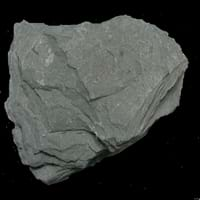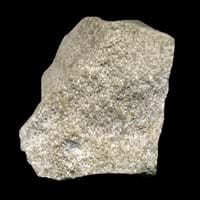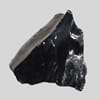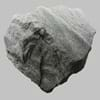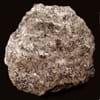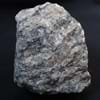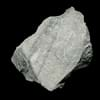Definition
Slate is a fine-grained, foliated, homogeneous metamorphic rock derived from an original shale-type sedimentary rock composed of clay or volcanic ash through low-grade regional metamorphism
Oolite is a sedimentary rock formed from ooids, spherical grains which are composed of concentric layers of calcite
Discoverer
Unknown
Unknown
Etymology
From Old French esclate, from esclat (French éclat)
From oo- + -lite, after German Oolit. A rock consisting of fine grains of carbonate of lime
Class
Metamorphic Rocks
Sedimentary Rocks
Sub-Class
Durable Rock, Medium Hardness Rock
Durable Rock, Medium Hardness Rock
Group
Not Applicable
Volcanic
Other Categories
Fine Grained Rock, Opaque Rock
Fine Grained Rock, Opaque Rock
Texture
Foliated
Clastic or Non-Clastic
Color
Black, Brown, Buff, Green, Light to Dark Grey, Purple, Red, Shades of Blue
Black, Blue, Brown, Cream, Green, Grey, Pink, Red, Silver, White, Yellow
Durability
Durable
Durable
Scratch Resistant
Yes
Yes
Appearance
Dull
Rounded and Rough
Interior Uses
Bathrooms, Decorative Aggregates, Entryways, Floor Tiles, Flooring, Homes, Hotels, Interior Decoration, Kitchens, Stair Treads
Decorative Aggregates, Flooring, Interior Decoration
Exterior Uses
As Building Stone, As Facing Stone, Garden Decoration, Paving Stone
As Building Stone, As Facing Stone, Garden Decoration, Paving Stone
Other Architectural Uses
Curbing
Not Yet Used
Construction Industry
As Dimension Stone
Cement Manufacture, Cobblestones, Landscaping
Medical Industry
Not Yet Used
Not Yet Used
Antiquity Uses
Artifacts, Monuments, Sculpture, Small Figurines
Artifacts
Commercial Uses
Blackboards, Commemorative Tablets, Laboratory bench tops, Standard material for the bed of Billiard table, Standard material for the beds of Pool and Snooker table, Tombstones, Used in aquariums, Writing Slates
Creating Artwork, Jewelry, Used in aquariums
Types
Not Available
Not Available
Features
Easily splits into thin plates, Surfaces are often shiny, Very fine grained rock
Available in lots of colors, Generally rough to touch, Very fine grained rock
Archaeological Significance
Monuments
Used
Not Yet Used
Famous Monuments
Data Not Available
Not Applicable
Sculpture
Used
Not Yet Used
Famous Sculptures
Data Not Available
Not Applicable
Figurines
Used
Not Yet Used
Formation
Slate is a low grade metamorphic rock that is generally formed by metamorphosis of mudstone or shale, under relatively low pressure and temperature conditions.
Oolites form when layers of calcite are deposited around a sand grain or fossil piece and are rolled around in calm water, which makes them round.
Mineral Content
Apatite, Biotite, Chlorite, Feldspar, Graphite, Hematite, Kaolinite, Magnetite, Pyrite, Tourmaline, Zircon
Calcite, Chert, Clay, Dolomite, Quartz, Sand, Silt
Compound Content
Aluminium Oxide, CaO, Iron(III) Oxide, Potassium Oxide, MgO, Sodium Oxide, Silicon Dioxide, Titanium Dioxide
Aluminium Oxide, Ca, NaCl, CaO, Iron(III) Oxide, FeO, MgO
Types of Metamorphism
Burial Metamorphism, Cataclastic Metamorphism, Regional Metamorphism
Not Applicable
Types of Weathering
Biological Weathering, Chemical Weathering, Mechanical Weathering
Biological Weathering, Chemical Weathering, Mechanical Weathering
Types of Erosion
Coastal Erosion, Glacier Erosion, Water Erosion, Wind Erosion
Chemical Erosion, Coastal Erosion
Grain Size
Very fine-grained
Fine Grained
Fracture
Splintery
Conchoidal
Streak
Light to dark brown
White
Porosity
Less Porous
Less Porous
Luster
Dull
Pearly to Shiny
Compressive Strength
Not Available
Cleavage
Slaty
Non-Existent
Specific Gravity
2.65-2.8
Not Available
Transparency
Opaque
Opaque
Density
2.6-2.8 g/cm3
Not Available
Specific Heat Capacity
Not Available
Resistance
Heat Resistant, Impact Resistant, Pressure Resistant, Wear Resistant
Heat Resistant, Wear Resistant
Deposits in Eastern Continents
Asia
China, India, Turkey
Brunei, India, Indonesia, Malaysia, Singapore, Thailand, Vietnam
Africa
Not Yet Found
Cameroon, Chad, Ghana, Kenya, Malawi, Sudan, Tanzania, Togo, Zambia, Zimbabwe
Europe
Belgium, France, Germany, Italy, Norway, Portugal, Spain, United Kingdom
United Kingdom
Others
Arctic
Not Yet Found
Deposits in Western Continents
South America
Brazil
Colombia
Deposits in Oceania Continent
Australia
Not Yet Found
Adelaide, New Zealand, Queensland, Tonga, Victoria, Yorke Peninsula
All about Slate and Oolite Properties
Know all about Slate and Oolite properties here. All properties of rocks are important as they define the type of rock and its application. Slate belongs to Metamorphic Rocks while Oolite belongs to Sedimentary Rocks.Texture of Slate is Foliated whereas that of Oolite is Clastic or Non-Clastic. Slate appears Dull and Oolite appears Rounded and Rough. The luster of Slate is dull while that of Oolite is pearly to shiny. Slate is available in black, brown, buff, green, light to dark grey, purple, red, shades of blue colors whereas Oolite is available in black, blue, brown, cream, green, grey, pink, red, silver, white, yellow colors. The commercial uses of Slate are blackboards, commemorative tablets, laboratory bench tops, standard material for the bed of billiard table, standard material for the beds of pool and snooker table, tombstones, used in aquariums, writing slates and that of Oolite are creating artwork, jewelry, used in aquariums.
